Agile Retrospectives: 6 Ideas to Spice Up Your Regular Retros
In this article, I am going to uncover some ideas to spice up your Agile retrospectives.
In fact, these ideas come not only from my own experiments but also from a collection of books, workshops, and courses I gathered over the years.
If it’s your first time facilitating a retrospective you will find good ideas to get you started. But if you are a veteran facilitator you might also find new ideas to reengage your team.
Most of my experience is with distributed and remote teams but these ideas can easily be adapted for collocated teams.
In this article, you will learn:
- What is an Agile retrospective?
- Ideas to improve your retrospectives.
- How to plan your retrospectives.
- Online tools for remote teams.
It’s a lot to cover, so grab your coffee, and let’s jump right in!
What is an Agile retrospective?
The simplest way I define a retrospective is: a time for the team to reflect on what has occurred and to find ways to become better going forward.
Although retrospectives are part of some Agile frameworks such as Scrum (where it’s called sprint retrospective), you can get the benefits of retrospectives even if you don’t follow an Agile methodology.
The retrospective meeting can only be effective with a skillful facilitator. This is because divergent opinions and different personalities can create conflict and make decision-making difficult. So a facilitator can help the team reach agreements and find solutions to improve.
Let’s look at the most common format for retrospectives. I will call it “the classic retrospective”.
The classic format for retrospectives
The most common format is to focus on 3 questions:
- What went well?
- What is not working well?
- What can we do to change it?
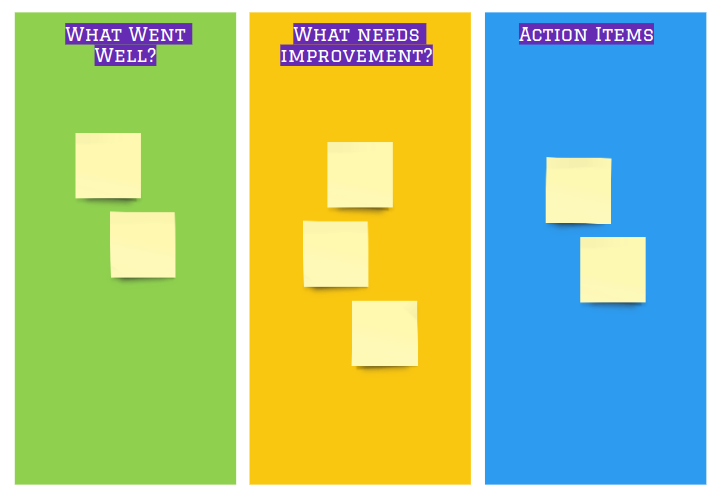
The facilitator sets the stage for the meeting and asks the team to write the topics they want to discuss and add them to each column. If there are many topics the team can vote on the topics they want to discuss first. Then, the team discusses how actions they can do to improve in the future.
There are many online tools to do a retrospective with this format. My favorite is EasyRetro.
This format is simple and works very well. However, if you ask always the same questions people quickly figure out a way to answer the questions without thinking much. And I don’t blame them, I did the same when I was a developer.
As the meeting facilitator, you should adapt your plan for the retrospective for the needs of the team at the moment.
You will find my favorite activities below, but before that, let me share an idea for a quick win:
Idea 1: Start the retrospective with music to set the mood.
Sometimes I like to start the retrospective with music to set a good vibe for the meeting. Music can be used for example as an energizer when the team is tired, or to calm down when there is a conflict or just to have to laugh and have fun. Dancing is optional 🕺💃
Starting a meeting with music makes an enormous difference in how the meeting disenrolls and is so easy to do but not many people do it. Try it even if you work in a formal workplace and you are afraid to be perceived as unprofessional, and let the improvements in the team speak for themselves.

Music can also be used as an icebreaker by asking around everyone in the team what is their favorite song. Besides creating empathy this also has the advantage that if someone speaks in the beginning, they are more likely to also speak during the activity.
In fact, you can use this trick of using music in other meetings as well. Give it a try.
Idea 2: Adapt the activities
Changing the format of the retrospective can reveal problems that the team doesn’t bother to bring anymore because got used to living with them. Use different retrospective activities to achieve different results.
For example, one simple change instead of the classic format is: Do more of, Do more of, Ideas, Appreciations, Actions.
Having a column with “Ideas to try” sparks the imagination of the team to run experiments. The column “Appreciations” is an excellent way to say thank you to someone that helped the team or did an awesome job.
One of my favorite activities is the Sailboat retrospective.
The sailboat retrospective
I like this technique because it is very visual and simple but also very effective.
You just need 5 elements: a Sailboat ⛵ , an Island 🏝️, an Anchor ⚓, Wind 🌬️, and Rocks (I like to replace rocks with Monsters 👹 just for fun ).
Like this:
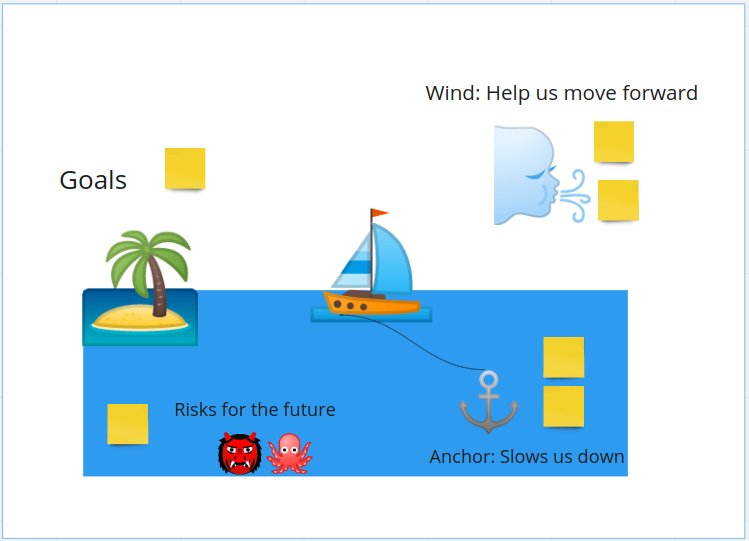
- The Island represents the goals for the iteration.
- The Anchor on the Sailing boat represents everything that is slowing down and holding the team back on the journey towards the goal.
- The Wind represents everything helping the team to achieve the goal, pushing the team’s sails boat to go even faster.
- The Monsters represent potential risks ahead that we see will jeopardize the future.
The sailboat retrospective is a way for the teams to quickly visualize goals and what they need to achieve them. This retrospective can be used for teams at each maturity level.
If your team is collocated you can draw the five elements on a whiteboard or just print this page.
How to do the Sailboat retrospective online?
Option #1: Just add each topic as a column in the board: island 🏝️, an anchor ⚓, wind 🌬️, and monsters 👹.
You can use EasyRetro or Trello to create the board.
Option #2 Use this Miro board.
Circles and Soup Retrospective
“The chief task in life is simply this: to identify and separate matters so that I can say clearly to myself which are externals not under my control, and which have to do with the choices I actually control. Where then do I look for good and evil? Not to uncontrollable externals, but within myself to the choices that are my own . . .”
—Epictetus, Discourses, 2.5.4–5
You might face situations when a team doesn’t feel they can change anything and the retrospective just becomes a place to complain and nothing changes.
You can use the Circles and Soup activity to help the team understand what they can change, what they can ask for help, and what can’t be changed.
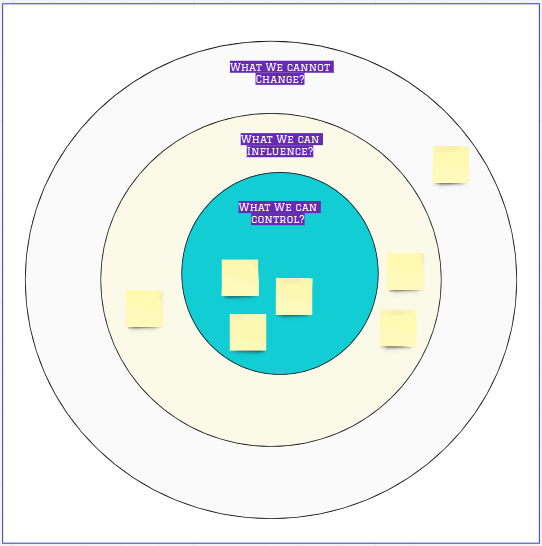
Here is how to use this activity:
First, draw 3 concentric circles
- The inner-circle is the place for “What team Controls” – these are the actions the team can change by themselves. For example, write more tests for the code,
- The middle circle is the place for “Team Influences” – items that are not directly under the control of the team but the team still can influence. In fluence can be in many ways, for example, just asking for help or do a presentation to explain an alternative solution.
- Outer circle: “The Soup” – This is the place we cannot change. For example, the weather, the market, or sick leave, etc…
Ask your players to write their ideas for each circle on sticky notes. Once finished, ask them to post their notes in the respective circles. As a group, collaborate to identify how each idea can be used to improve your project. Encourage team members to expand on their ideas in order to further develop potential plans.
The idea is to focus on the things that we can’t control or influence. The things we can’t control we just have to accept them. This creates a sense of calm in the team once they understand they have more control than they realize.
I also suggest you use this exercise for yourself when you feel anxious about the future. You will feel much more in control of your life. But that is the topic of another article where I talk about stoicism.
You can find this and many more activities in the book: Plans for Retrospectives by Corinna Baldauf.
But not too many changes at once…
Does the following scenario sound familiar?
You found a new activity and get excited to try it with one of your teams in the next retrospective. However, when you introduce many changes at once, people get confused and don’t know what to expect. I know because I did this mistake many times.
So, whenever you introduce a new activity to the team always explain why you are changing things and make sure everybody understood how to perform the activity.
Also, even if picking a random activity might be fun for the facilitator but it is not the best for the team. You should select the activity that fits better the needs of the team at that moment.
And that leads us to the next idea…
Idea 3: Have a plan for your retrospective
Ok, this should really be the first point because having a plan prepared for the retrospective is one of the key elements to make the meeting successful.
In the book Agile Retrospectives, Esther Derby and Diana Larsen recommend 5 steps to plan a retrospective:

- Set the stage Start with a simple welcome and appreciation for people’s investment of time. Restate the purpose of the retrospective and the goal for the session. Remind people of how long you’ll meet. Then ask everyone in the room to speak.
- Gather data Collect not only data about events, metrics, features or stories completed but also about the mood of the team during the last time period.
- Generate insights Lead the team to examine the conditions, interactions, and patterns that contributed to their success. Investigate breakdowns and deficiencies. Look for risks and unexpected events or outcomes.
- Decide what to do. Help the group comes up with a specific, measurable, and time-bound experiment (aka action item) or acknowledging if the topic is too broad and the time left during retrospective is not sufficient to come up with a detailed plan. If so schedule a follow-up meeting with its purpose and its desired outcome.
- Closeout Ask the team how the retrospective meeting can be improved. End the meeting on a high note with a round of appreciation. You can also use Kudos cards to share appreciation.
I strongly recommend reading the book Agile Retrospectives, because there are so many good tips.
Idea 4: Use a Countdown Timer
Regardless of your experience, there will always situations where difficult to keep the timebox assigned for each section.
One of the things that I found useful is to have a countdown timer visible to everyone.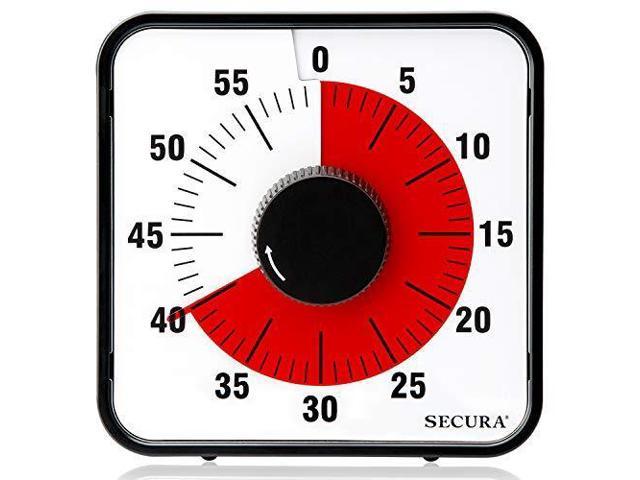
For remote teams, you can use eggtime.com or for collocated teams a physical countdown timer like this for example.
Idea 5: Use Lean Coffee to organize the topics
After the team has written the topics for each of the columns, the next step is to vote on the topics and order the topics you want to discuss first. For this, you can use an activity called Lean Coffee.
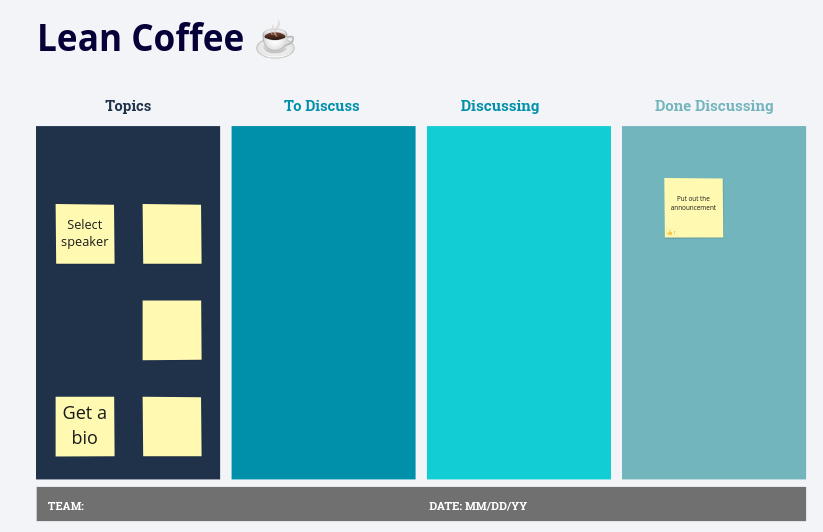
Idea 6: Use retrospectives in different contexts
Retrospectives can be used in many different contexts not only during the sprint. One good example is to do a 5-minute retrospective at the end of every meeting. Add the topic to the template of the agenda. This way you can collect ideas on how to improve the meeting and make it more effective or even cancel the next meeting if they don’t bring value.
Conclusion
If you read this far you probably guessed I love retrospectives. Even though retrospective can be stressful, messy, and even ugly sometimes, they can also be fun and exciting. I strongly believe retrospectives is one of the best ways to improve and embrace the Agile mindset.
Try some of these ideas and let me know if this article was helpful.
What is missing from this list?
There are so many other activities that could be included in this list but these are my favorite ones. I am always looking for new ideas and fun activities to do with my teams.
If you think I missed something important send me a message on LinkedIn